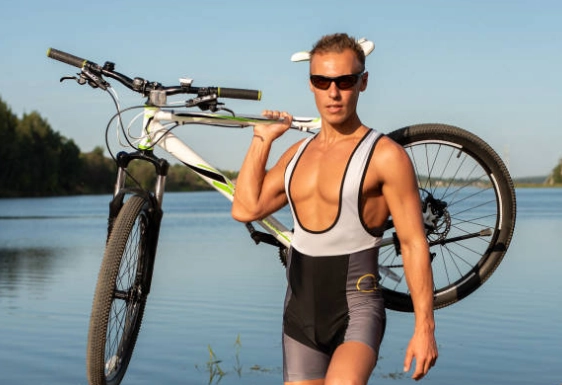Thermal clothing, a fundamental necessity in human life, holds a historical evolution intrinsically linked to the progression of human society. From antiquity to contemporary times, enhancements in productivity and technological advancements paired with shifts in aesthetic perceptions have greatly influenced the material composition, designs, and functions of thermal clothing. This article will delve into the chronological development of elementary thermal attire tracing from ancient periods through to the present day.
Simplicity and Practicality of Ancient Thermal Clothing
In ancient times, people initially used natural materials such as animal skins, leaves, and feathers to make clothes for the purpose of keeping thermal. Although these primitive materials were rough, they were the earliest thermal clothing, reflecting human adaptation and transformation of the living environment. With the emergence of textile technology, people began to use fiber materials such as hemp, silk, and cotton to make clothes, greatly improving their warmth.
In ancient agricultural societies, the design of thermal clothing often emphasized practicality and durability. Thick clothes such as cotton robes and leather jackets became the first choice for winter warmth. These clothes are mostly in dark colors, which are not only dirt-resistant, but also absorb more sunlight heat, enhancing the warming effect. At the same time, the detail processing of ancient thermal clothing was also quite particular, such as the thickening design at the collar, cuffs, and hem, and the use of fur edges, embroidery and other decorative techniques, which not only increased the warmth of the clothes, but also reflected people’s pursuit of beauty.
Luxury and Exquisiteness of Medieval Thermal Clothing
Entering the Middle Ages, with the prosperity of society and the development of culture, thermal clothing gradually moved away from purely practical functions and began to incorporate more artistic elements. Nobles wore luxurious fur coats and silk robes to show their status and status. These clothes are made of superior materials and exquisite in craftsmanship. Decorative techniques such as embroidery and inlay make the clothes even more exquisite.
In this era, the styles of medieval thermal clothing became more diverse. Different styles such as robes, capes, and cloaks met the warmth needs under different occasions and climatic conditions. In addition, people began to pay attention to the color matching and pattern design of clothes, making thermal clothing a fashionable expression while keeping warm.
Transformation and Innovation of Modern Thermal Clothing
With the rise of the modern industrial revolution, the production methods and materials of thermal clothing have undergone tremendous changes. Mechanized production has greatly increased the output of thermal clothing and made the prices more affordable. At the same time, the emergence of new synthetic materials, such as nylon and polyester, has provided more choices for thermal clothing. These materials are not only lightweight and easy to care for, but also have excellent warmth, which is loved by people.
In terms of style, modern thermal clothing also shows a diversified development trend. Different types of thermal clothing such as down jackets, cotton clothes, and woolen sweaters have emerged to meet the needs of different groups. At the same time, with the changes in fashion trends, the design of thermal clothing is increasingly focusing on individuality and fashion sense. From color to pattern, from style to match, all reflect people’s pursuit of beauty and expression of personality.
In addition, modern thermal clothing has also greatly improved in functionality. The addition of windproof, waterproof, and breathable functions makes thermal clothing more handy in dealing with harsh weather. At the same time, the use of some high-tech materials, such as thermal insulation fibers and heat reflection technology, further enhances the warmth of thermal clothing.
Diversity and Integration of Contemporary Thermal Clothing
Entering contemporary society, the evolution of thermal clothing has become more diversified and integrated. With the advancement of globalization and cultural exchange, the thermal clothing styles of different countries and regions are integrated to form a rich and colorful style. From traditional Chinese cotton-padded jackets and cheongsams to Western trench coats and coats, to ethnic costumes with national characteristics, all reflect the diversity of thermal clothing.
Contemporary thermal clothing also pays more attention to environmental protection and sustainability in terms of materials and craftsmanship. The use of environmentally friendly materials such as organic cotton and regenerated fibers, as well as energy-saving and emission-reducing production processes, make thermal clothing not only thermal but also in line with people’s pursuit of environmental protection.
In addition, with the continuous development of technology, thermal clothing has also incorporated more intelligent elements. The application of intelligent temperature control technology and wearable devices makes thermal clothing more intelligent and personalized in terms of warmth. People can adjust the warmth of their clothes according to their needs and changes in the environment, achieving a more comfortable and convenient wearing experience.
Harvest SPF Textile Co, Ltd, established in 1993, is a company that specializes in the research, development, and international trading of healthy and functional textiles. One of their key product categories is thermal clothing, which is particularly popular among outdoor enthusiasts and those in colder climates. Harvest’s thermal clothing stands out due to its unique composition. The company has developed a variety of merino wool compositions in layers to meet the needs of different seasons, which has gained great market success. They are particularly adept at combining merino wool with sustainable materials, or adding prints to enhance product line diversity.
In conclusion, the chronological progression of fundamental thermal clothing, from its inception in antiquity to today’s modern era, offers a succinct representation of humanity’s civilizational advancement. Its transformation transcends beyond just basic necessity and functionality; evolving throughout history towards luxury and elegance, then toward innovation and novelty in modern times while currently embodying diversity and convergence. Thus illustrating that warm attire not only addresses our physiological requirements but further encapsulates our relentless pursuit for aesthetics as well as the preservation of cultural legacy. The future trajectory will see this essential element continuing to evolve parallelly with societal trends – instigating innovations for development whilst minimizing departure from traditional roots – thus striving to infuse greater degrees warmth, comfort, and aesthetic appeal into human lives.














